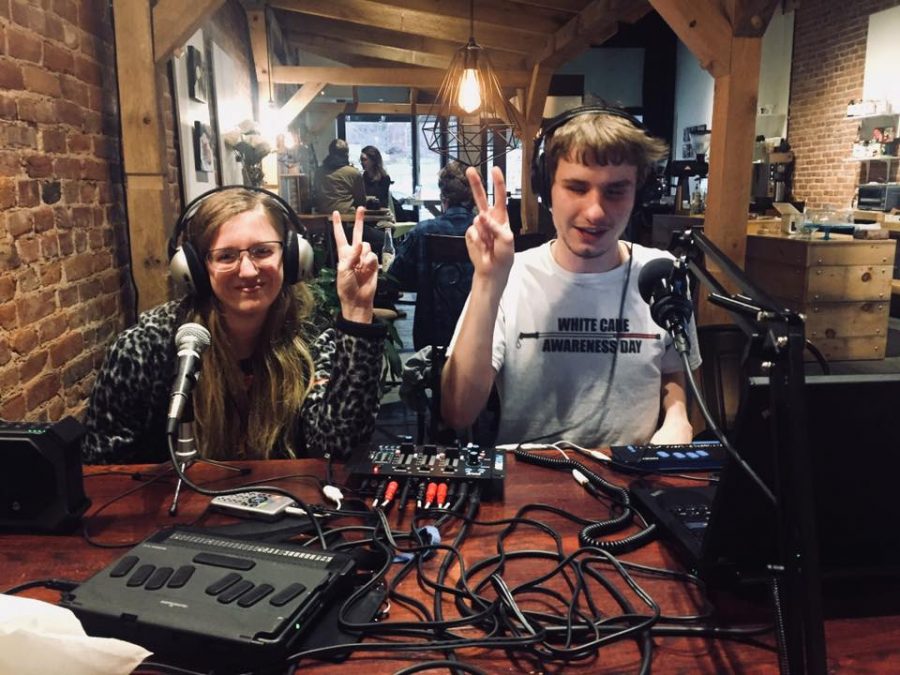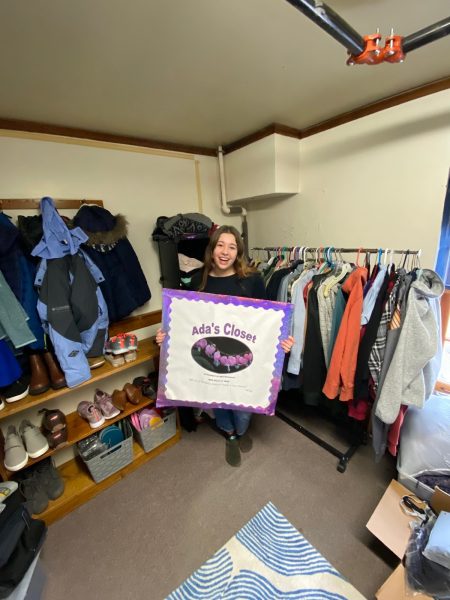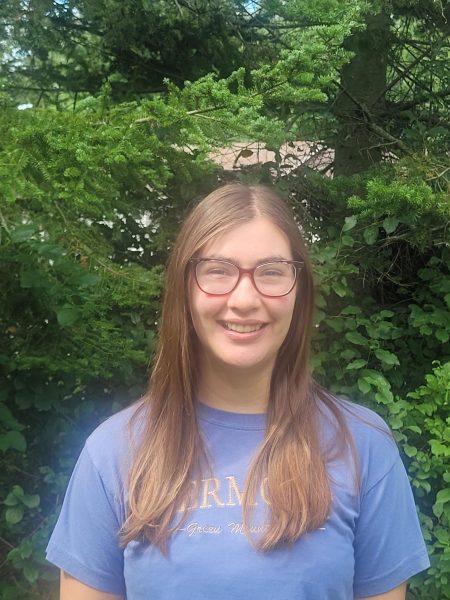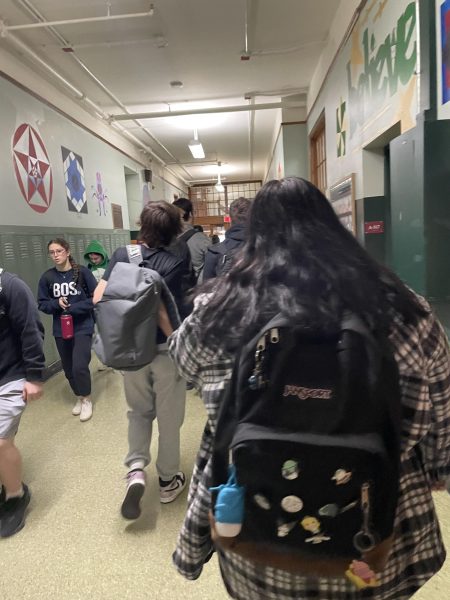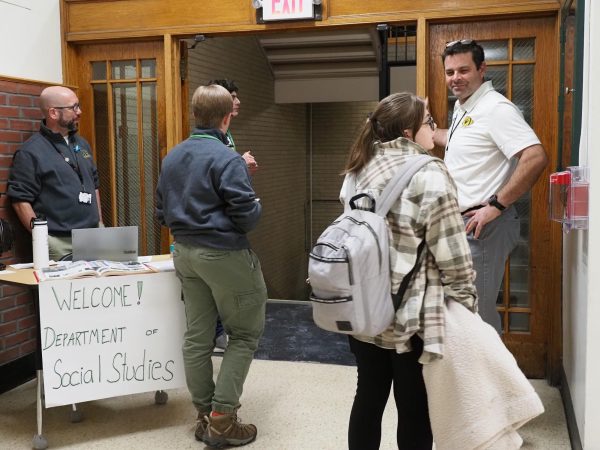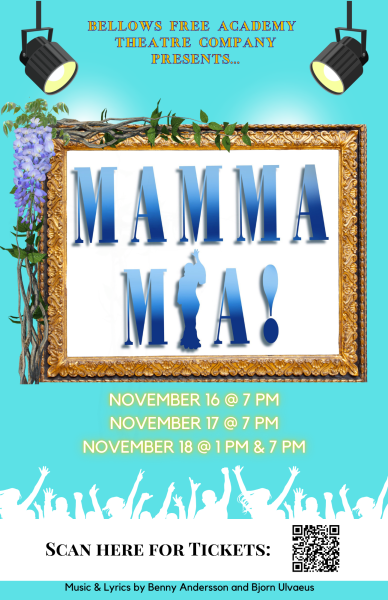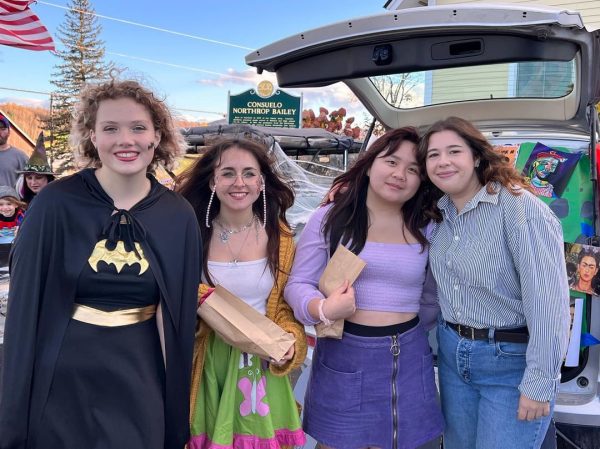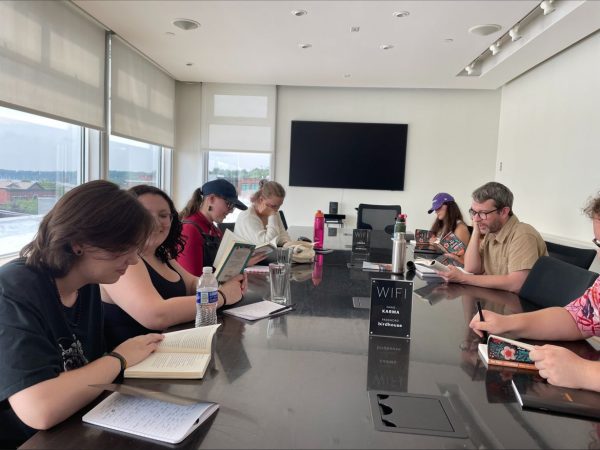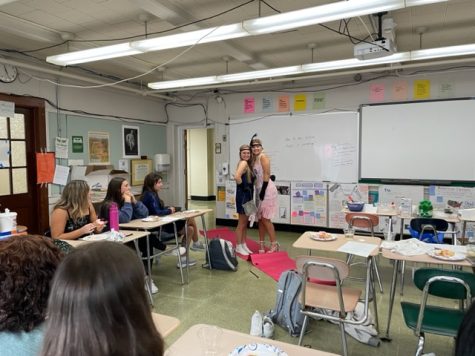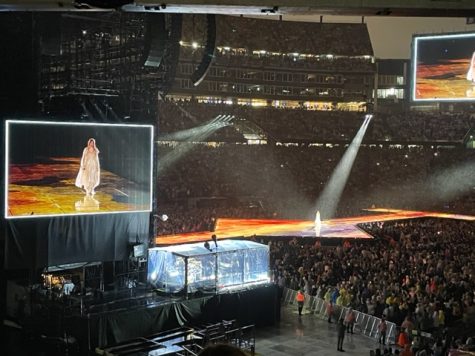Social Media: Not Just for the Sighted
Alek Wolfe (’18) produces his show, “The Mixdown,” at the Catalyst coffeehouse, with friend, Emily Bachand (’20). Photo credit: Megan Bachand
November 30, 2020
According to Mayoclinic.org, “A 2018 Pew Research Center survey of nearly 750 13- to 17-year-olds found that 45% are online almost constantly and 97% use a social media platform, such as YouTube, Facebook, Instagram or Snapchat.” Lindsay Bernard (‘22) has 863 followers on Instagram. She averages 260 likes on each of her posts and roughly 30 comments. “I like to post just pictures of myself or things I’m doing. [Social media] is mostly a place for me to feel creative with photography,” said Bernard.
While many young people enjoy posting fun photos of themselves for their friends and family to see, there is a group of people who find social media more tricky than enjoyable. For those with visual impairments, social media feels like a sighted person’s world. With videos and photos being the main form of media being shared, it is hard not to feel like they are left out of the loop. According to Buzzfeednews.com, in an interview with blind war veteran Rob Long, he said, “Instagram is so visual that it’s just a nightmare. It’s really, really hard [to use].”
Alek Wolfe (‘18) is a college student at Northern Vermont University Lydon studying broadcast digital journalism. The 21-year-old radio host was born with retinopathy of prematurity. “I would explain my visual impairment to a sighted person as only being able to…see light,” Wolfe said. Wolfe needs social media to engage with his listeners and keep them up-to-date on the news. With social media being such a crucial part of what he does, he relies heavily on image descriptions on posts.
What exactly is an image description; what does it look like? As Wolfe puts it, “A photo description is a digital label on an image that a user has posted on a social media site. When a blind user comes across it, Voiceover will read it out loud, describing what is in the image such as an object or a facial expression.” A photo description is usually found at the bottom of a post’s caption, separated from the other comments and labeled: PHOTO DESCRIPTION. The most important aspects of a picture are described in detail for the Voiceover to read aloud.
It takes less than five minutes to write an image description on each of your posts, so why don’t more people write them? The issue comes from a lack of understanding and knowledge. When asked if she knew what an image description was, Bernard said, “I’ve heard of photo descriptions and have seen a couple, but I don’t know who they benefit or what they add, to be completely honest.” Without the knowledge of what they are and who they benefit, we cannot expect others to adopt them.
When asked why he believes photo descriptions are important, Wolfe said,” Photo descriptions are very important because it can help a blind user with his or her surroundings, and it can help them understand the world around them as if they can see.” He also said that he feels, “like a sighted user because I’m not relying on someone to be there all the time. In other words, I can manage my own accounts more [easily] than before when there [weren’t] really picture descriptions.”
Wolfe said that there are no real, “don’ts” when writing an image description as long as you are describing the image being posted. “As long as you put the color of something in a photo, that is great. Think of it this way, what is a sighted person seeing when they click on a photo? You want to try to put that into words. For example, a blue car with a sunset behind it. A person sitting smiling and looking at a yellow camera. Little things like that can help,” Wolfe said.
Bernard enjoys taking cute pictures and having fun with her friends. She just so happens to have a large number of followers taking in those pictures. When asked if she would consider adding image descriptions to her post, she said, “I may look into it further and begin to add them simply because, at the moment, I am uneducated on the topic.”
Though Wolfe realizes many may struggle with remembering to add photo descriptions, he feels hopeful for the future of social media inclusion, saying that, “I think that as technology improves, there will be more access to photos for blind people. And this is not to say we aren’t making progress, we certainly have since I started using social media back in 2013.”
If you are looking for a relevant example of photo descriptions in action, BFA’s own theater Instagram and Facebook (@bfatheater) have recently made the effort to add them to every post. This account, run and monitored by students, stands as a beacon of change that Wolfe is hopeful for.“We can only go up from here,” said Wolfe.

